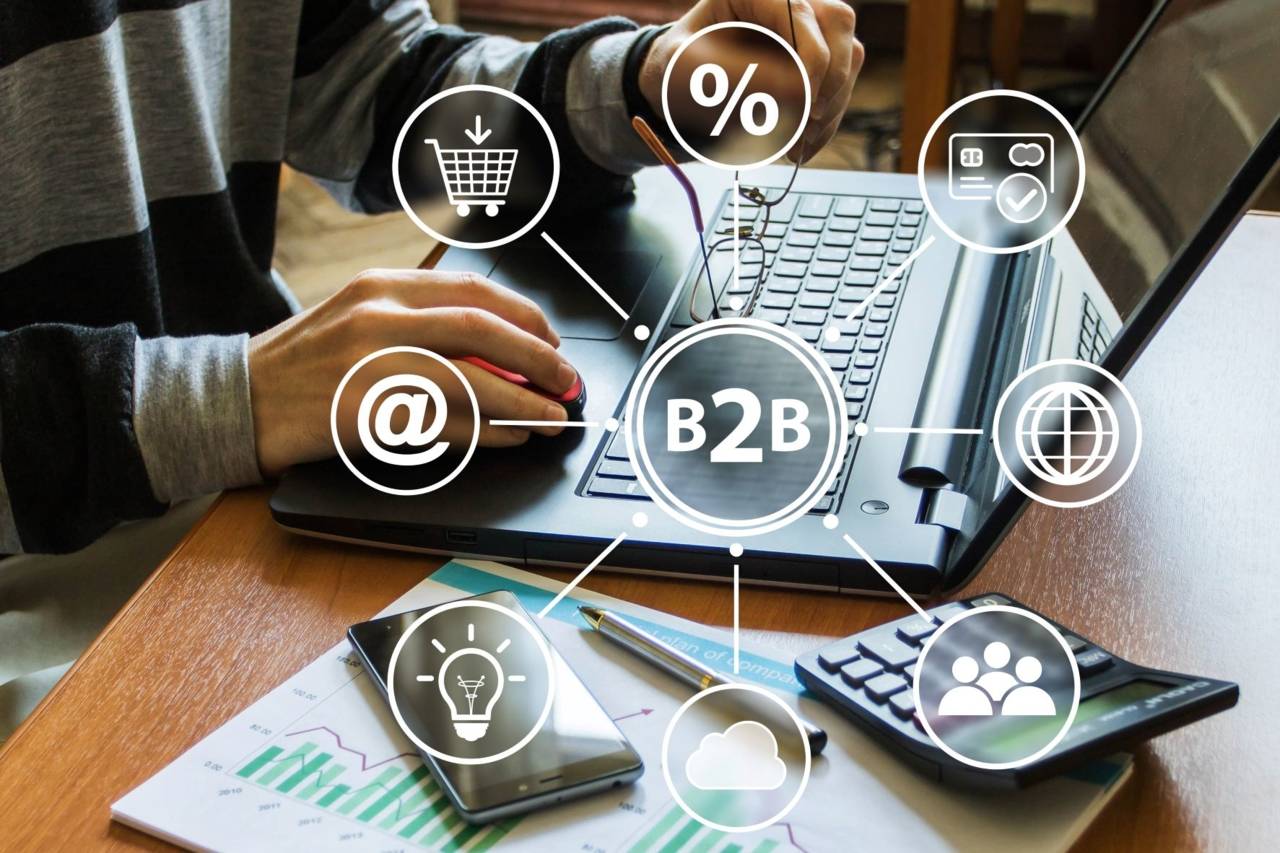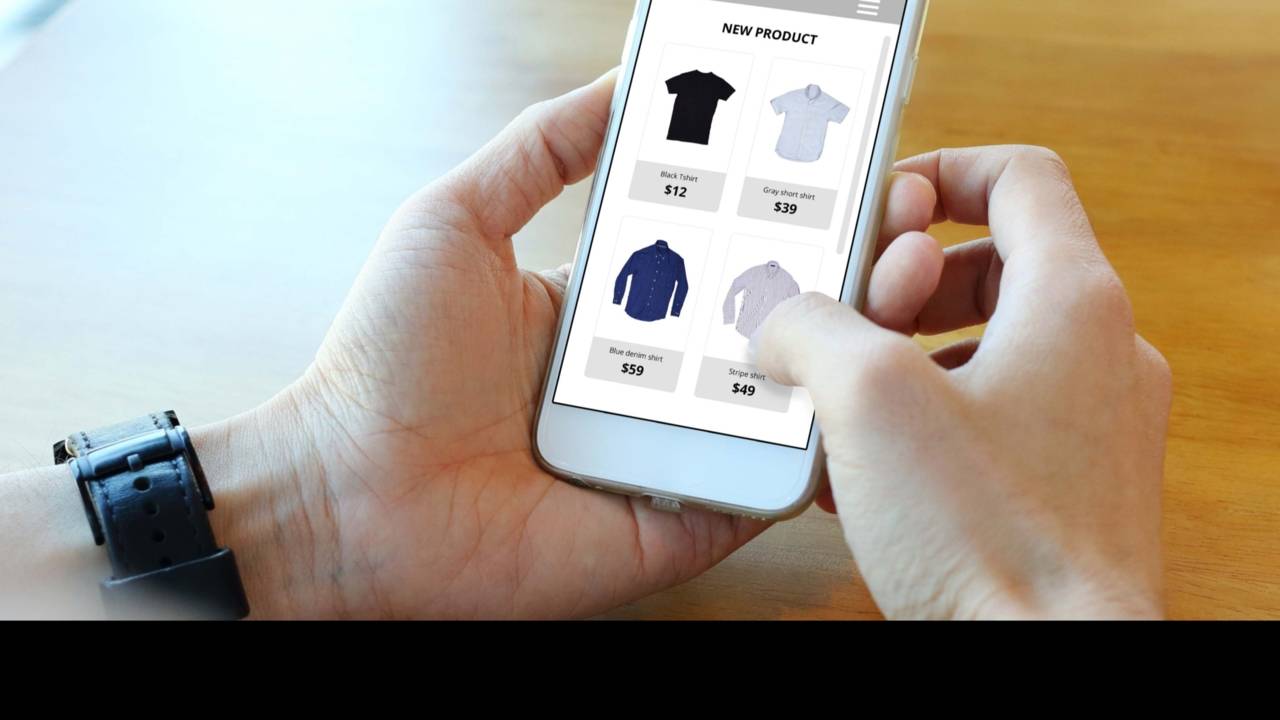B2B e-Commerce Trends for 2022 and Beyond

In 2022, there is no doubt that the biggest challenges facing B2B companies involve digital transformation and facilitating e-commerce options. As we emerge from a global pandemic that irreversibly changed how we work and accelerated the implementation of key digital technologies, those organizations that do not adapt to an increasingly digital B2B landscape will suffer and fade away. This blog post looks at the essential B2B trends we think will define 2022 and beyond.
The challenge facing B2B companies
This year, the key B2B e-commerce trends will reflect the fact that digital transformation is shaping up to be a make-or-break process for many companies. They will also highlight B2B customers' shifting expectations. With a growing number of millennials assuming positions of power in B2B hierarchies and with more B2B decision-makers benefiting from direct experience of the power of digital tools, this transformation will be rapid, comprehensive, and decisive. For most B2B companies, it's time to digitally transform - or die.
The idea that digital transformation is a priority and is primarily driven by customer demand is backed up by statistics. A Digital Commerce 360 survey showed that just under half of B2B suppliers believe developing a more sophisticated website to meet customer needs better is the biggest challenge they face in 2022. Likewise, Forbes recently reported on a survey that showed 75% of B2B customers had requested the ability to purchase online. Almost three-quarters of those customers stated that the reason was the simplicity of shopping online. Customer expectations and demands are driving digital transformation in B2B companies and forcing the adoption of new technologies.
B2B trends for 2022
1. Bringing it back to e-Business
As a term, e-commerce has been around for a significant amount of time. It's a central concept in B2C online operations and plays a growing role in the B2B approach. However, if B2B companies are to implement digital transformation effectively, they cannot directly import language, concepts, and models from the B2C sector. The two differ significantly. Simply copying B2C terminology and ideas will not serve B2B organizations well.
E-commerce is an excellent example of this. It's a term that has derived much of its meaning from B2C, where customer relationships are far simpler and more direct. In the B2B sector, e-commerce is woefully inadequate. Instead, businesses should consider a return to e-business, a term much better suited to B2B because of its scope.
Whereas e-commerce restricts itself to the act of buying and selling online, e-business encompasses every aspect of conducting business online. In the context of B2B, where pricing and logistical complexities are inherent in doing business, and there can be multiple stakeholders and convoluted workflows, e-business is what matters. As a result, we expect to see far more B2B organizations focusing on e-business rather than concentrating solely on e-commerce.
2. The rise of the Digital Sales Room
A recent McKinsey report highlighted that only 20% of B2B buyers want to return to in-person sales. This statistic seems to confirm the argument that B2B organizations are so focused on digital transformation because their customers now expect and demand more intuitive and efficient digital experiences. But how does this manifest in reality?
The Digital Sales Room is a relatively new B2B trend that illustrates how businesses can use digital technology to meet customers' shifting expectations. Designed to be a secure, shared space for sellers to inform, interact and negotiate with potential buyers, the Digital Sales Room is comparable to a customer- or partner-facing portal. It enables businesses to segment customers and offers custom pricing, tailored recommendations, relevant content, and product information that enhances the customer experience.
Only about 20 percent of B2B buyers say they hope to return to in-person sales, even in sectors where field-sales models have traditionally dominated, such as pharma and medical products.
Essentially, Digital Sales Rooms are microsites that streamline the sales process and digitalize those conversations that sales reps and customers used to have over the phone. However, alongside those conversations, customers now have all the information they need to make sales decisions in a centralized location that is available 24/7 (which is great for deals where multiple stakeholders sitting in different geographies that may be involved). This also ensures the sales process is quicker, easier, and more convenient.
3. Integration and Automation Platforms become the agile glue between customer experiences and the plethora of systems.
In the current B2B landscape, most organizations are working with diverse digital tools, technologies, and systems. This is partly due to the piecemeal approach most businesses have taken to adopting digital technology. It may also point towards a future in which SaaS tools become increasingly niche and businesses rely on a significant amount of third-party software and integrations to deliver a satisfactory customer experience.
That being said, these disparate systems need to be melded into a system that functions as a whole. If not, organizations will suffer from data silos, an inability to implement omnichannel practices successfully, and poor user experiences. In 2022, we expect DXPs to emerge as the most effective and popular way of bringing all these systems into line and tying everything together.
DXPs allow organizations to build processes that enhance the customer experience rather than forcing customer experiences to fit around existing systems, integrations, and processes. This is absolutely essential, as a make-do approach to digital experiences will only frustrate customers and push them toward the competition. The age of improvised digital infrastructure is over.
4. Selling across third-party B2B marketplaces
Though many B2B organizations have been slow to embrace marketplaces, they are becoming an increasingly important channel in the B2B ecosystem. Recent research suggests that marketplaces may account for 30% of all online B2B sales by as soon as 2024 (DigitalCommerce360).
This is backed by a greater focus on B2B from some of the biggest digital marketplaces on the planet. Both Amazon and Alibaba are investing in attracting B2B organizations to their platforms and the growing number of third-party marketplaces means B2B buyers and sellers have more choice than ever.
Marketplaces are also a popular forum for buyers looking to conduct early research into pricing and availability. This means they are a great way for B2B suppliers to introduce their brand to potential customers.
A popular and effective B2B e-commerce technique is to list your relatively simple products on a marketplace. You can then use this additional visibility and exposure to direct customers towards the more complex, high-value products listed on your own e-commerce store.
5. Digitalizing hybrid sales channels with buyer/seller enablement functions
Although digital technologies (and DXPs in particular) are well-positioned to automate a considerable number of sales functions and processes, companies cannot and should not attempt to automate everything. Human agents still have an essential role to play. But that role is changing.
With this in mind, we believe that the growth of hybrid sales channels will be a defining B2B e-commerce trend in 2022. Blending automation tools and traditional sales channels is complex, and finding the right balance for your hybrid system will depend on your customers' needs. In most cases, B2B companies will require specific tools to make it work.
For instance, a DXP enables and accelerates sales team activity with tools connected to customer-facing portals and touchpoints on one side and, on the other, to the sales cockpit - whether that is within a CRM, sales portal, or custom applications. This ability to blend the approaches makes DXPs so valuable and ensures they complement the e-business approach.
6. Improving product management (PIM) and display
Many buyers still have big problems trying to find up-to-date product information on the internet. In most cases, the issues originate with poor product management and data silos. Many B2B organizations still use spreadsheets to manage their product catalog and information. This hampers easy integration and results in product display errors.
The solution is integrated PIM and ERP solutions. By centralizing information within these solutions, you allow for quick and easy updates and a single point of access. Similarly, the solutions are designed to integrate with other e-commerce technologies, ensuring you can offer a fully omnichannel experience.
You can incorporate product information into content, use it to resolve customer service enquiries and merge it with marketing materials. It is versatile, accurate and always available. ERPs ensure the changes you make occur in real-time, so that nothing is ever out of date. For information-hungry B2B buyers, this is extremely valuable.
7, Personalization, Segmentation and targeting will prove key to success
Personalization is key to success in B2C. That's increasingly true in B2B, too. However, personalizing content and pricing is far trickier in B2B. There are more variables, more decision-makers, and complex workflows to navigate. Despite this, B2B companies need to provide a more personalized service, as that is what customers expect and demand.
It's not just personalization that matters, though. Segmentation is also vital. Segmenting your buyers by size, location, or type (e.g. resellers, wholesalers, or manufacturers) enables you to deliver custom pricing, target specific groups with specialized content, and engage with customer groups more comprehensively. The ability to differentiate between these groups is essential if you want to cater your products and services to a wide range of customers.
Finally, it’s helpful to note that technological changes are making B2B personalization, segmentation, and targeting easier. For instance, Ibexa DXP’s headless architecture makes managing, editing, and publishing content across multiple channels far more straightforward. In turn, this reduces the amount of time and resources that go into producing and communicating personalized content.
8. Understanding the customer journey through analytics
The B2B customer journey is much more complex than traditional B2C journeys. When it comes to analytics, that means there is much more to measure, analyze and understand. It also means there is more opportunity for service improvement through detailed analysis.
Analytics help enhance the customer experience, improve supply management, power up personalization, and prevent purchase abandonment. Through careful study of the data, you can identify your problem points and dislocations - those areas where the customer hits a bump or comes up against an obstacle and drops out of the sales funnel.
While most DXPs may offer only basic analytics, they do permit integrations with other advanced business systems that enable comprehensive data analysis. This will prove remarkably helpful as you work towards an improved customer journey and a seamless digital experience
9. Adopting an Omnichannel ecommerce marketing strategy – implement marketing on more digital channels
McKinsey research highlights the fact that the average B2B buyer uses 10 or more channels in the buying process. The buyer journey is longer, more complex and spread across a greater number of channels. And B2B suppliers need to adapt.
In large part, this means adopting an omnichannel e-commerce marketing strategy that emphasizes a diverse range of channels. However, it does not mean firing out marketing materials left, right, and center with little thought of targeting. Your customers may use more channels than ever before. But they still have their favorites.
A successful omnichannel marketing strategy will make the most of headless capabilities. Headless architecture empowers businesses to distribute content across multiple channels at a minimal cost. By detaching content from the channel in which it was originally produced, you can repurpose, reuse, and recycle content across several channels, making your marketing efforts far more efficient and guaranteeing brand consistency.
10. Feeling the effect of a generational shift
We have already touched on the growing influence of digitally native millennials in B2B organizations. However, as this generational shift will only gather pace and looks set to radically alter how B2B companies conduct their business, it's worth looking at this in greater depth.
As more of this digitally-fluent generation rise to senior purchasing positions, we expect greater pressure on B2B suppliers to design and successfully implement intuitive customer journeys. Millennials are putting a greater emphasis on customer experience and value ease of interaction far more than previous generations. They're accustomed to self-serve options, often recognize the limitations and weaknesses of traditional customer service channels, and are quicker to avoid face-to-face interactions if they don't see their benefit.
This generation also grew up with, and was conditioned by, the emergence and eventual ubiquity of B2C e-commerce. B2C's digital domination has shaped individuals' expectations, and those expectations are now being applied to B2B. While this presents B2B companies with a whole host of challenges, it's also an opportunity that businesses need to grab with both hands if they want to survive and thrive.
11. Adding more payment options
Despite adopting new technologies and embracing digital transformation, many B2B organizations still rely on traditional payment methods. These include checks, open invoices, and buying against account.
Though they are well-established, these methods are time-consuming, expensive and inefficient. They require considerable manual processing and often take a long time to clear. This is a significant issue for SMEs, which struggle to guarantee cash flow and often receive payment long after the agreed terms.
Adding digital payment options is quicker, more transparent and far more flexible. 24/7 availability ensures that customers can make payments at a time that suits them, while the reduction in paperwork means less time is spent chasing payment and making payment enquiries.
12. Implementing B2B portals
Self-service is quickly becoming an influential factor in determining B2B success. While we are still a long way off self-serve being as popular in B2B as it is in B2C, we are headed in that direction. B2B customers want the ability to complete certain parts of the buyer journey without having to speak to a sales rep. They may not be at the point where they are comfortable conducting the whole buying process via self-serve, they want self-service options when it comes to product support, research, and customer service.
B2B sales portals are one of the most effective ways of delivering self-serve options. They offer buyers enhanced functionality and enable them to browse products, request information, make purchases and track orders without having to wait for responses to emails or spend time in customer service queues.
However, sales portals only work when you integrate them into an omnichannel system. Buyers want to be able to speak to a rep immediately if they need to. And they expect that rep to know what actions they have taken in the portal. Make sure your portal integrates with all other channels and ensure that customers can channel shift seamlessly if they need to.
If you're interested in how Ibexa DXP can help your organization fulfil its digital promise and begin the digital transformation process and keep up with the latest B2B e-commerce trends, take a look at our product page or get in touch. Our experienced team understands the difficulties B2B companies face, and we designed our DXP to reflect and meet your needs. A powerful, modular platform that can scale as you do, Ibexa DXP ensures you can deliver satisfying and seamless digital experiences to all your customers.
Covid has been a moment of truth for B2B. Lanching digital channels is the way forward.
How B2B Companies Can Diversify Their Digital Sales Channels
Are you concerned about losing your current strong sales relationships if you move to digital, and how do you position yourself within the complex dynamic between the products that you sell and the digital channels that best serve your purpose: to sell more?
This eBook addresses how B2B businesses can evaluate their options, and to focus minds on the implications of diversifying their digital sales channels.



